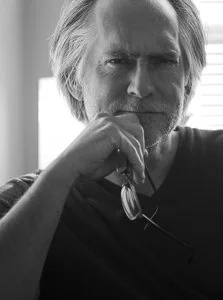Transformation - ICM (LO1, LO2)
1/2s, f/22, ISO 50, zoom lens 24-70mm f/2.8S
One of my thoughts about the project Transformation is using ICM - Intentional camera movement. I took couple of shots below. I’m not sure if I stick to this technique for my final project but it is definitely worth trying it. I am a nature lover and my inspiration is coming from there.
Research on artist’s work
One of the early advocates of intentional camera movement technique was Ernst Haas.
Ernst Haas (1921-1986)
“There is only you and your camera. The limitations in your photography are in yourself, for what we see is what we are.” – Ernst Haas
Austrian American photojournalist and colour photographer. Haas was known for his commercial work – he was the first to photograph a Marlboro Man. Haas cropped and abstracted, photographed against the light and out of focus, and used reflections and close-ups to mystify the visible. He was often shooting away from the subject at acute and unexpected angles and frequently employed techniques like shallow depth of field, selective focus and blurred motion to create evocative metaphorical work. Haas was most recognised for his innovations in colour photography as well as his use of abstract light.
His new use of shutter speed added a blurred effect to his images, creating a unique sense of movement. “Bored with obvious reality, I find my fascination in transforming it into a subjective point of view,” he once said.
Chris Friel (born 1959)
Chris Friel is a British photographer who has spent a long time trying to take a photograph that he likes and he has produced more than a million images over the last decade. Chris worked as a painter for many years and turned to photography quite late in his career in 2006.
“Most of these images are multiple long exposures, with camera movement. Some are done in camera and some have had the frame tweaked in post. I have written an automated sequence in Corel Painter, which grabs colour and texture from the original image and generates a randomised frame. Since putting out the book, I have gotten the hang of doing this all in camera, which I find more satisfying, but does involve rotating the camera 360 degrees to generate the frame and the use of a tripod, which I dislike.”
For many years he only used tilt shift lenses in order to achieve the image simplification. These days he uses a straight 50mm prime.
Douglas Barkey (born in 1960)
American born artist raised in Argentina, influenced by Latin American artists and musicians.
Douglas is a photography and digital media artist who specifically works in advertising, portraiture, landscape, documentary, and digital montage.
“I have been pretty deeply involved in exploring intentional camera movement. It was something I began doing using film in the 80’s, but I came back to explore it further with digital photography, because the precise control that Camera Raw adjustments provide allows me to tease out edges, volume, and colour without interfering with the integrity of the exposure.”
My work
Based on the research above I explored the intentional camera movement more, this time especially with tilting and shifting. ICM is an abstract style of shooting and a proper photography technique where a camera is moved during the exposure and through the creative outcome a message is conveyed. It has no rules.
I enjoyed playing with different shutter speed which gives a different finish. I captured the following images without a tripod.
Image 1-3: 2s, f/8, ISO 100, zoom lens 24-70mm f/2.8S
I moved my camera up and down to create this effect.
1/2s, f/18, ISO 100, zoom lens 24-70mm f2.8S
Some parts of the image are not much blurry as I wanted to clearly define the shapes.









Image 1: 1/5s, f/2.8, ISO 100; Image 2: 2s, f/2.8, ISO 100; Image 3: 2s, f/2.8, ISO 100; Image 4: 2s, f/2.8, ISO 100; zoom lens 24-70mm f/2.8S
On the image 1 I moved my camera from side to side meanwhile on the other 3 images I zoomed in and out.



Image 1: 3s, f/2.8, ISO 100; Image 2: 3s, f/2.8, ISO 100; Image 4: 3s, f/2.8, ISO 100; zoom lens 24-70mm f/2.8S
For the three images above and below I used slightly different technique. The shutter speed here is much slower than in previous images. Longer exposure allowed me to move my camera from the center to the left and then to the right. Some parts of the subject look like they are “cloned”. Again I didn’t use a tripod.
It is a similar technique I already practised in my a studio and described it in my previous blog ICM Technique - Learning Skills.



Image 1-3: 8s, f/5, ISO 100, zoom lens 24-70mm f/2.8S
Another technique I’m considering to explore for my project Transformation is a long exposure technique.
Conclusion
I have to admit I enjoyed using the ICM technique more than I expected. To create a meaningful abstract and blurry photographes with this technique you really need to define a message you want to convey and practise a lot. I also think that final editing process is absolutely necessary here.
Source: www.cfriel.com, asmp.org; school course materials; internet






















